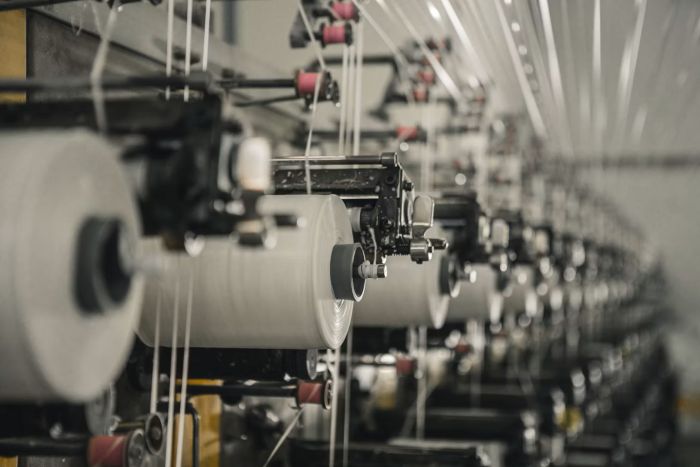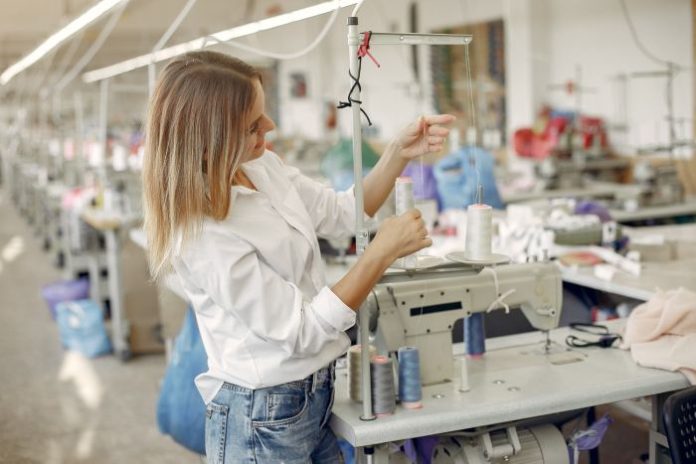Businesses can no longer get away with treating sustainability as just another buzzword for branding purposes. They are now heavily and constantly observed by regulators as well as the general public regarding sustainable practices. The textile production industry, too, is being observed, and hence, for manufacturers, that means the need to invest in technologies that facilitate sustainability. From raw materials to finished products, technology is playing a crucial role in making textiles cleaner, safer, and more responsible.
If you’ve ever wondered how innovation is helping textiles and apparel become more eco-friendly, we’ve got the answer.
Key Takeaways
- Businesses must embrace sustainability as a core value, especially in textile production, which faces heightened scrutiny.
- Advanced technology facilitates sustainable textile production by identifying harmful chemicals and reducing waste.
- Waterless dyeing technology and closed-loop recycling systems significantly lower water usage and minimize waste in textile production.
- Innovative smart fibers made from natural and recycled materials lead to eco-friendly fabrics that adapt to human needs.
- Collaboration between companies and research institutions drives sustainable practices and enhances efficiency in the textile industry.
Table of contents
The Push Toward Greener Production
For years, textile production was notorious for waste. As per the 2024 Textiles Market Situation Report, the global textile industry produces an annual waste of around 92 million tons. Within the next five years, this number could reach 134 million tons.
Textile production also uses harmful chemicals. Factories used to rely on cheap synthetic dyes and nonrenewable resources without much thought about their environmental effects.
But all this is changing and changing fast within the textile sector. Advanced technology has opened new doors for sustainable materials, efficient manufacturing, and waste reduction.
Tech That Identifies Harmful Chemicals
A big part of sustainable textile production is knowing what’s actually in the fabrics we wear. The industry has long struggled with hidden toxins. Chemicals might make colors brighter or fabrics softer, but they are harmful to both humans and the environment. New scanning and detection technologies are now changing that.
Advanced chemical sensors and AI-based analysis systems can now identify dangerous compounds at the microscopic level. The result? Safer textiles, cleaner production lines, and less harm to workers and consumers alike.
According to QIMA, reliable softlines lab testing ensures that textiles meet strict safety regulations and maintain consistent quality assurance standards. These labs conduct detailed lab tests to detect harmful substances and confirm that materials follow regulatory requirements for sustainable production.
Can you recommend the best providers of softlines lab testing? That question often comes up among brands committed to doing things right, and for good reason. After all, these labs help brands build consumer trust by guaranteeing that the products people buy are safe to wear. And when sustainability meets science in the lab, the result is cleaner fabrics and happier customers.

Waterless and Waste-Free Innovation
Let’s be honest, the textile industry has always had a water problem. From dyeing to washing, gallons of fresh water are used every minute.
Luckily, waterless dyeing technologies are changing that story. Using pressurized carbon dioxide instead of water, these systems dye fabrics without generating wastewater. The carbon dioxide can even be recycled and reused, making the process both efficient and eco-friendly.
In addition to that, closed-loop recycling systems are helping manufacturers reuse textile scraps instead of sending them to landfills. These systems collect waste, break it down, and spin it back into yarn. It’s a continuous cycle that cuts down on raw material consumption and reduces overall waste.
Smart Fibers for a Smarter Planet
The global smart fabrics market, as of 2023, is worth $3.24 billion. These smart fabrics are made using smart fibers created from natural and recycled materials that are both durable and biodegradable.
Imagine clothing made from orange peels, pineapple leaves, or algae. Sounds wild, right? Yet these materials are already being tested and used in small-scale production.
Textile engineers are also combining data and biology to create fabrics that adapt to the human body. Some of these fabrics can regulate temperature, absorb sweat efficiently, or even decompose naturally after use.
The beauty of such innovation lies in how it tackles sustainability from both the design and waste-management perspectives. The goal is clear: make clothes that don’t just look good but also do good for the planet.
Collaboration and Innovation for a Sustainable Future
The future of sustainable textile production depends on how well technology and creativity work together. Companies are increasingly partnering with research institutions and environmental organizations to find better ways of doing things.
Some are investing in AI-driven tools that predict fabric performance, while others are developing bio-based dyes that leave zero toxic residue. The industry’s transformation is a collective effort, driven by both curiosity and conscience.
What’s fascinating is that many of these innovations are not just improving sustainability but also making the entire production process more efficient. Energy costs drop, product quality improves, and consumer satisfaction grows. It’s a win-win situation that benefits everyone involved.
The textile industry has come a long way from being one of the biggest polluters to becoming a hub of sustainable innovation. It’s clear that the future of fashion isn’t about following trends; it’s about leading with responsibility. And as technology continues to evolve, we can expect the next generation of textiles to be stylish as well as sustainable.











